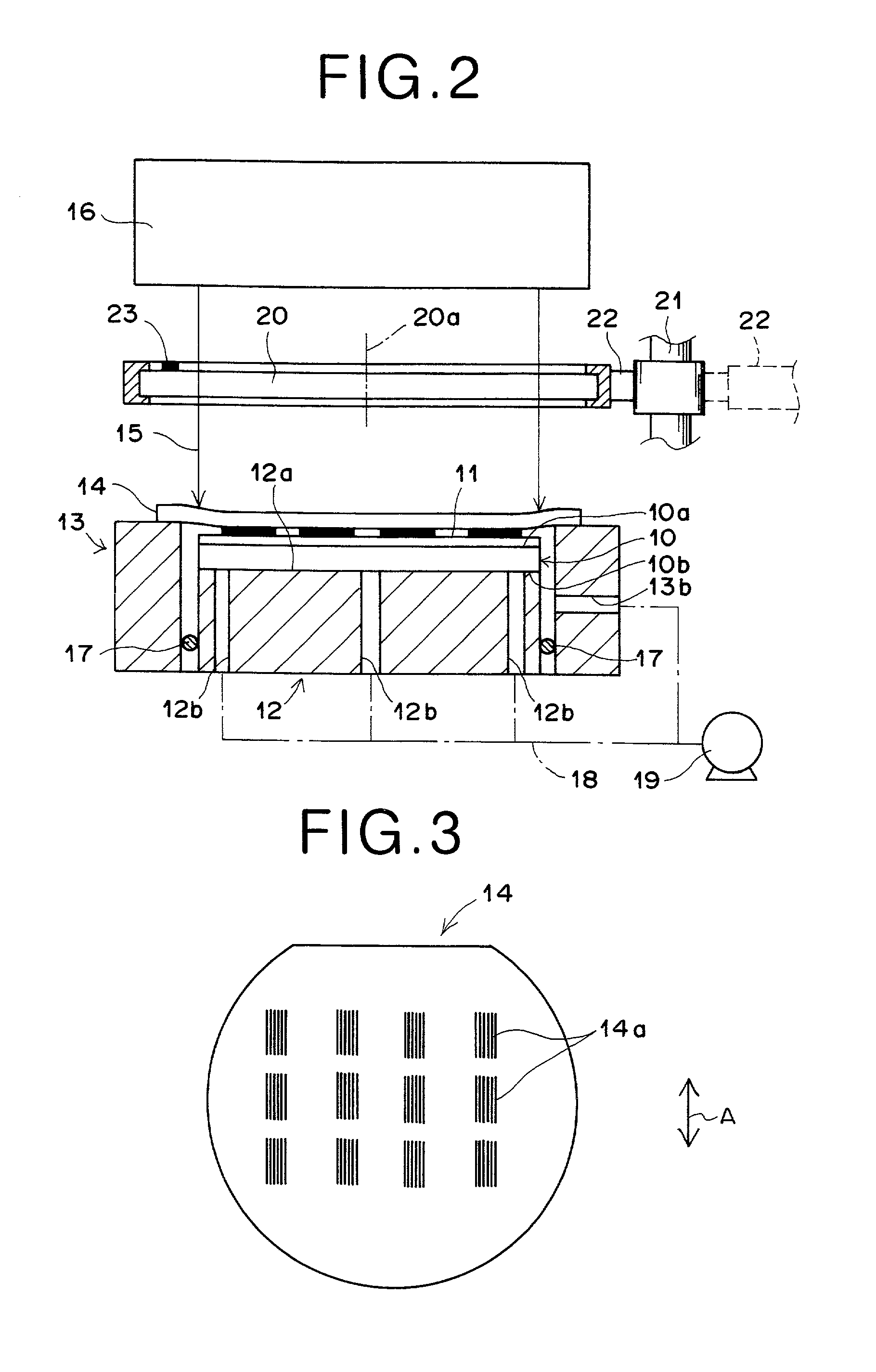Near-field exposure system selectively applying linearly polarized exposure light to exposure mask
a linear polarization, near-field exposure technology, applied in the direction of photomechanical equipment, instruments, printers, etc., can solve the problems of low throughput, low resolution limit of exposure light, and current electron beam lithographic techniques are far from the level which enables mass production
- Summary
- Abstract
- Description
- Claims
- Application Information
AI Technical Summary
Problems solved by technology
Method used
Image
Examples
first embodiment
Operations of First Embodiment
[0055] The operations of the near-field exposure system as the first embodiment of the present invention are explained below.
[0056] The substrate 10 is placed on the exposure table so that the back surface 10b of the substrate 10 is in contact with the substrate holding surface 12a, where the photoresist 11 is applied on the upper surface 10a of the substrate 10. In addition, the photomask 14 which has the aforementioned pattern is placed on the photomask holding member 13. At this time, the polarizer disk 20 is inserted in the optical path of the exposure light 15. This situation is illustrated in FIG. 1.
[0057] When the air suction means 19 is activated, air is sucked by the air suction means 19 from the plurality of ventilation paths 12b so that vacuum evacuation is achieved in the plurality of ventilation paths 12b, and the substrate 10 comes in contact with the substrate holding surface 12a of the exposure table 12 and is held by the exposure table ...
second embodiment
[0066] FIG. 4 is a side view, partly in cross section, of a near-field exposure system as the second embodiment of the present invention. In FIG. 4, elements having the same functions as the elements in the near-field exposure system illustrated in FIG. 1 bear the same reference numerals as FIG. 1, respectively, and only the differences from the construction of FIG. 1 are explained below.
[0067] The near-field exposure system as the second embodiment is essentially different from the first embodiment in that the exposure light source 36 emits linearly polarized exposure light 35, and a quarter-wavelength plate 30 (as a phase plate) is provided instead of the polarizer disk 20. For example, the exposure light 35 may be laser light.
[0068] The quarter-wavelength plate 30 can be inserted in the optical path of the exposure light 35 from the exposure light source 36 to the photomask 14. Specifically, the quarter-wavelength plate 30 is held by a polarizer-disk holding means 32, which can m...
PUM
| Property | Measurement | Unit |
|---|---|---|
| wavelength | aaaaa | aaaaa |
| wavelength | aaaaa | aaaaa |
| wavelength | aaaaa | aaaaa |
Abstract
Description
Claims
Application Information
 Login to View More
Login to View More - R&D
- Intellectual Property
- Life Sciences
- Materials
- Tech Scout
- Unparalleled Data Quality
- Higher Quality Content
- 60% Fewer Hallucinations
Browse by: Latest US Patents, China's latest patents, Technical Efficacy Thesaurus, Application Domain, Technology Topic, Popular Technical Reports.
© 2025 PatSnap. All rights reserved.Legal|Privacy policy|Modern Slavery Act Transparency Statement|Sitemap|About US| Contact US: help@patsnap.com



